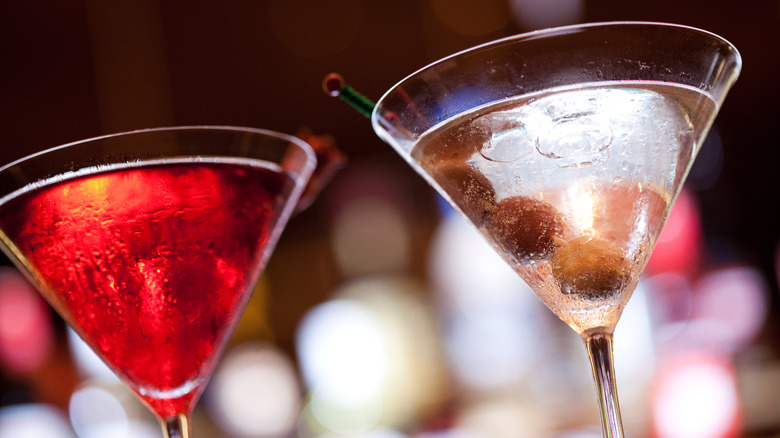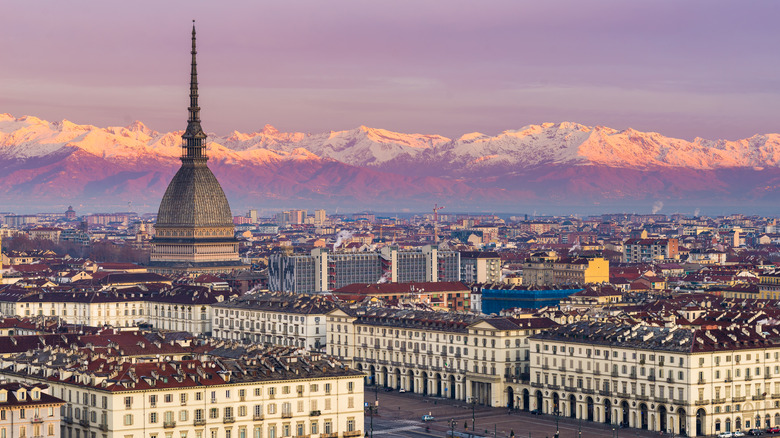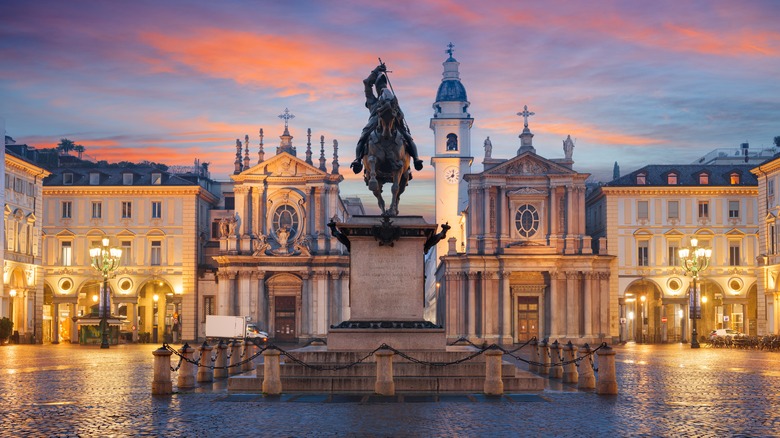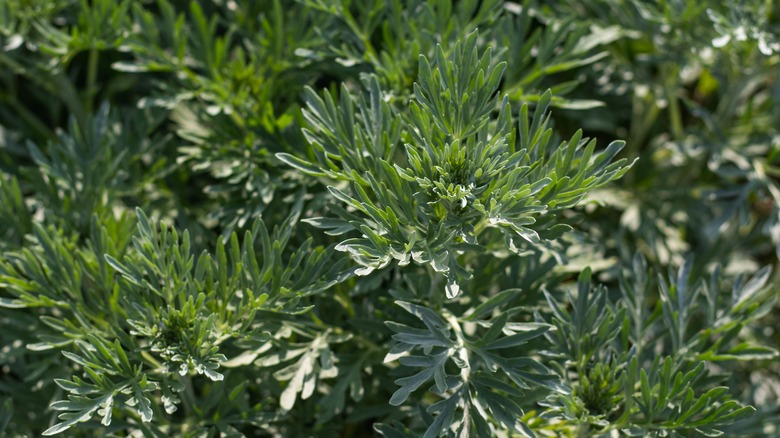What's The Difference Between Vermouth And Vermouth Di Torino?
Martinis, negronis, and manhattans all have one major commonality: vermouth. As a fortified wine, vermouth is neither a spirit nor a liqueur. Rather, it's its own entity entirely. However, not all vermouths are "Vermouth di Torino," a label that may or may not appear on your alcohol bottle. While it's easy enough to overlook the "di Torino" designation, the meaning of that label actually refers to a few specific factors regarding the drink's place of origin. This criteria distinguishes the Torino style of vermouth from the spirit at large and refers to where the vermouth is made and bottled, the drink's use of Italian wine, and the origin of vermouth's artemisia.
To explain the differences between vermouth and Vermouth di Torino, some context is required. For starters, you may notice the "di Torino" label present depending on the brand of vermouth you purchase. A slew of vermouth brands make their own iterations of the drink, from Tribuno to Cocchi. Though these brands all produce the same type of drink, they definitely vary. These differences could include the botanicals the brands use, as well as each bottle's price point, overall taste, and quality of production.
Vermouth indicates a style of fortified wine that ranges in sweetness
If you've ever ordered vermouth or seen it on a menu, you've likely noticed it annotated with "dry," "bianco," or "red." These common labels refer to the level of sweetness of the vermouth. A dry vermouth comes far more bitter than a red vermouth, while a bianco one sits somewhere in the middle.
Given the spectrum of sweetness, each of these vermouths has different uses. In America, you're likely to encounter dry vermouth as a typical ingredient in martinis. In Italy, however, you'll notice it as a star in a classic negroni, which pairs sweet vermouth with gin and Campari. Then, there are the more niche, specialty cocktails. For example, El Presidente cocktails use semi-sweet bianco vermouth, as do Cinque 7 mixed drinks.
Independent of your chosen vermouth's sweetness, the production of the alcohol combines herbs, aromas, botanicals, and other flavors with a base of wine. It's this production process that distinguishes standard vermouth from the more specific Vermouth di Torino. The latter must follow a set of criteria to receive that "di Torino" designation, based on inspiration and ingredients from Torino, Italy.
Vermouth di Torino originates from Turin and must be produced a certain way
For the truth about Vermouth di Torino, look at its name. While Spain and France also make vermouth, Vermouth di Torino hails from the northern Italian city Torino, also known as Turin. Just like any other vermouth, Vermouth di Torino comes in those three styles of sweetness.
Any vermouth with the Torino label must utilize ingredients from the northwestern Italian region of Piedmont. From there, Vermouth di Torino is recognized by the Italian government, thereby receiving the label "di Torino."
"In 2019, Vermouth di Torino was codified into European Union law," explains spirits and cocktail educator Philip Duff. "That means if it says Vermouth di Torino, which it says on all [vermouth brand Cucielo] bottles, you know that it is made in Turin. You know that it's only Italian wines, and ... The wormwood that gives us the word vermouth has to be from the region."
These three criteria define Torino-style vermouths and characterize the vermouth's production process.
Vermouth di Torino is made and bottled in Italy's Piedmont region
Northern Italy knows a thing or two about locally-produced alcohol. After all, prosecco originates from the country's Northeast, specifically in Italy's Veneto region. Head to Northwest Italy, however, and you'll switch from sparkling wine to a more fortified version. There, in the country's Piedmont region, Vermouth di Torino is made and shipped around the world.
Essentially, Vermouth di Torino has to be both made and bottled around Torino, Italy to receive the classification. However, if a vermouth is indeed produced in Piedmont, it's only one-third of the way to becoming a Vermouth di Torino. The vermouth's designation is not only about its place of production, but also about the locality of its ingredients. To receive that "di Torino" designation, the drink's geography must therefore align when it comes to its base wine and wormwood botanicals.
The wine used in Vermouth di Torino comes, at least in part, from Italy
Vermouth, at its core, is all about the wine ... so it's no surprise that Vermouth di Torino requires at least one Italian wine as the drink's base.
In general, vermouth tends to be at least 75% wine, so the wine base plays a major role in the drink's end product. This wine is then flavored with botanicals and fortified for a more intense flavor. As such, Vermouth di Torino doesn't play around with the origin of its wines — one or more of which must come from Italy.
That "di Torino" designation, however, gives vermouth the freedom to think beyond Turin, while still retaining an Italian focus. Cucielo, for example, uses a combination of wines from all over the country, including Sicily. These include Trebbiano d'Abruzzo, Grillo, and Ansonica. These wines, in particular, work well in vermouth thanks to their high residual sugar content.
Vermouth's wormwood must also originate from Italy's Piedmont region
Just as wine is integral to vermouth, so is wormwood. Wormwood — a type of plant that's also generally known as Artemisia — is responsible for vermouth's botanical flavors. Per European law, all vermouths must contain wormwood. (America, on the other hand, does not have those same regulations.)
Yet Vermouth di Torino takes Europe's wormwood requirement a step further. According to the Cucielo website, "the Artemisia Absinthium and/or Pontica used in 'Vermouth di Torino' must be grown or gathered in Italy's Piedmont Region." As a botanical, wormwood blends well with an array of spices and herbs. It's pivotal to Vermouth di Torino and helps the designated drink stand out amongst other versions of vermouth.
Cucielo's founder Andy Holmes put it best, outlining his decision to put forth not just a vermouth but an Italian one. "It's like what champagne is to sparkling," he said. "It's what cognac is to brandy; it's what single malt is to scotch."





